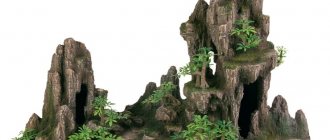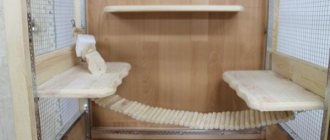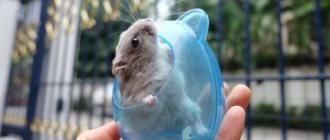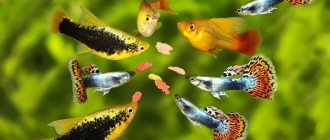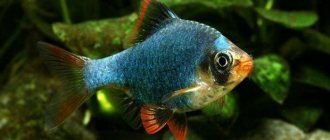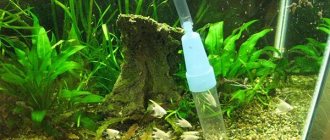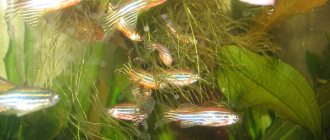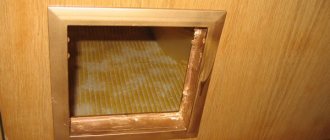In an aquarium where fish live, decorations play an important role. In addition to plants, you can add decorative elements to it: a model of a sunken ship, stones, shells and bright colorful algae. There is decor that is also functional, for example, in caves fish can hide from restless fellows. To make the design original and unique, you can make a grotto for the aquarium with your own hands.
In addition to plants, you can add decorative elements to the aquarium: a model of a sunken ship, stones, shells and bright colorful algae.
Necessary materials
If you have decided to make the decorations yourself, then first of all you need to pay attention to the materials. They must be safe and not change the aquatic environment, because many fish react very painfully not only to temperature, but also to the acidity, hardness and chemical composition of the water. Here are the basic rules:
- Materials containing lime should not be used. It increases the acidity of the water and makes it unsuitable for many fish. Cement should not be used for the same reason.
- Materials with a high iron content are also highly undesirable.
- Using stones from industrial areas or those picked up near businesses, busy highways and landfills is a very bad idea. They may contain traces of heavy substances that will not be removed even after boiling.
- There should be no sharp corners or edges, because the fish may get hurt. Even a small hole with sharp edges can cause harm if the fish does not calculate its strength and tries to squeeze through it.
- If the parts are made of wood, then you should find out in advance about the type of wood: some can release harmful substances into the water, for example, oak.
- Only special sealant for aquariums can be used as glue; the rest contain harmful substances that spoil the water.
Before starting construction, the stones and other materials from which the building will be constructed must be boiled. This kills most of the bacteria harmful to fish. Boil for at least 10 minutes; stones that have burst after this cannot be used.
It is also important to decide on the size of the cave: it directly depends on the size of the inhabitants of the aquarium. There should be enough space inside the grotto so that the fish can turn around and not get stuck in it, or the entrances should be through.
DIY aquarium decorations
As a rule, aquarists are very passionate people who are ready to do anything for their silent pets, including creating an exclusive decorative design for an aquatic house.
Decorating an aquarium is a creative process that entirely depends on the aesthetic taste of its owner, and every person feels special pride if the unique decorations are made with their own hands. Wanting to decorate his aquarium, creating a unique environment in it, an aquarist can use individual elements and parts sold in stores, as well as natural objects and materials. Decorations can be very simple or complex. For example, these could be models of ancient buildings of ancient times or knight's castles, a simple hill of neatly stacked stones or a fancy cave with several entrances. It all depends on the person himself. Of course, certain decorations must necessarily correspond to the character and habits of the aquarium inhabitants.
DIY background
Coconut as an aquarium decorative element
Wooden decorative elements
Stone
Ceramics as decorations
Some general decorating rules
No matter how much you would like to decorate your aquarium with a variety of crafts, you should not clutter the interior space too much. It must be remembered that its inhabitants need more swimming space.
It is recommended to place homemade decorations in the background or on the sides, since the basis of any aquarium is its inhabitants, and not crafts. In addition, such placement will help to hide from view technical devices for ensuring the vital functions of fish (filter, aerator, thermometer). It is advisable to leave only low decorative elements in the central part of the aquarium composition.
In pet stores you can easily purchase almost everything you need to decorate a fish house. But only well-made home decorations can serve as an object of pride for any aquarist and give the interior space a unique look and beauty.
aquariumguide.ru>
Decorations made of pebbles
The easiest option is to make a grotto out of stones for your aquarium with your own hands. Flat river pebbles will do. You just need to glue the stones together in random order to make a small hemisphere. For convenience, you can put something underneath, for example, a toilet paper roll. It will act as a frame that will support the stones in the desired shape until the glue dries. This takes about a day.
The main difficulty here is that you need to glue the first layer of stones directly to the bottom of the aquarium, because the grotto must stand motionless under water, otherwise it will simply fall apart. If the stones are heavy enough, then you don’t have to do this. It should be taken into account that the bottom will still be covered with a layer of soil, so the entrance must either be located above the ground level, or be large enough for the fish to swim inside.
To be on the safe side, you can place the grotto in an aquarium without fish for several days, periodically changing the water. This will help flush out any remaining harmful substances from the materials and check the strength of the structure.
There is another way, but it requires the use of a drill. You will need a stone of a suitable size to drill a fish cave in it. The advantage of this option is that there is no need to glue it to the bottom; there is nothing there to fall apart even when moving. But there are also disadvantages - you need minimal skills in working with drills, a correctly selected stone (not only in size, but also in material, because not everyone can be drilled just like that) and a lot of patience. There will be a lot of noise and dust during operation.
Types of decorations
A DIY boat, house, bridge and coconut grotto are the most popular types of decorations for an aquarium. They look unique and serve as a refuge for fish and shellfish.
To build a house, use both halves of one fruit, or a nut with the lower part cut off. In the first case, you get two flat shelters, in the second - a tall and voluminous house. To allow free movement of fish, holes of different shapes and sizes are drilled in future shelters. It is important that they are suitable for the aquarium inhabitants. For a better look, the houses are decorated by placing gold coins next to it or inside it.
To make a bridge you will need a large nut. The top and bottom are cut off from the fruit, resulting in a ring 8-10 cm wide. Then a small piece is cut off from the coconut circle and placed on the two ends from which the part was cut off. For a picturesque look, the bridge is decorated with vegetation - for example, Java moss.
The boat is also a popular type of decoration, but it is a little more difficult to make. To make it, cut the coconut into three lobes in those places where thin, barely noticeable lines run along the fruit. After sawing the shell, the resulting boats can be immersed in a body of water, making them an imitation of sunken ships.
Wooden buildings
The wood craft option is also not bad, but it is more complicated. First you need to select a small stump or driftwood without signs of rotting, clear the bark and drill holes in it for fish. One big one or many small ones - depends on the design. You can even drill out figured ones.
Then you need to sand the edges so that the fish does not harm itself . This should be done throughout the entire depth of the hole. Then burn the wood with a gas torch or blowtorch, so as not to set it on fire, you need to know how to do it correctly. To prevent the wooden grotto from starting to float at the slightest movement of water, it is glued to the base and sprinkled with soil.
DIY aquarium decorations
Aquariums are a whole universe for such small living creatures of the water element as fish, skates, crustaceans, snails, snakes... Their number is pleasantly shocking in any artificial reservoir. DIY aquarium crafts are a creative, exclusive process that depends on the talent of the owner. Aquarists take great pride in the wonderful creations they create. These masterpieces are beautiful and at the same time convenient for the aquatic inhabitants inhabiting aquariums. How many varieties can be implemented when making a magnificent brainchild!
Creating a background
You can create a mythical fairy tale from any wonderful moment in life. Someone remembers a vacation in the mountains and uses rock sculptures to create decorations. Someone cannot forget scuba diving to the bottom of the Black Sea with numerous strange algae on the bottom. Decorations for the aquarium can be created using a black tint. Thanks to this color, space is visualized. At the same time, a colorfully laid out mosaic of stones with colored lighting gives the splendor of the beauty of the water kingdom.
Background decorations for aquariums can be created by painting the surface and applying decorative designs. You can use self-adhesive film glued to a sheet of plywood. A pattern created by artists is applied to it. It must be tightly attached to the back wall of the artificial reservoir. The glass surface is wiped with glass cleaners and degreased. Otherwise, the film may fall off and scare the aquarium inhabitants. The surface is moistened with settled water, applying a plywood sheet evenly. Air is squeezed out of the film by evenly stroking or puncturing the surface. The plywood is secured with high quality tape.
When creating decorations for an aquarium, you can use a sheet of foam. It will serve as a screen, which can be replaced with other decor at any time. A rock, a castle, a waterfall is cut out of the material... The front side is burned with fire until small bubbles appear. Alabaster, gypsum or cement is applied to the hot side. After complete drying, the surface is painted over with gray or gold paint. Attach the art craft with the front side to the aquarium. The decoration for the aquarium will serve as a wonderful backdrop for its inhabitants.
The splendor of the waterfall
The aquarium scenery of the splendor of the waterfall is created by the mythical fall of the seething stream of water. The powerful effect is achieved by the skillful design of the falling jet of sand. This action is created thanks to an air compressor that creates a vacuum. Using injection, the sand rises up through the tubes and then smoothly descends, creating a wonderful illusion. With bated breath and eyes filled with delight, those observing the life of the water element will appreciate the beauty of the picture. You can create decorations for an aquarium in the form of a wonderful waterfall yourself using a compressor. You will need:
- A support whose height will serve as the size.
- Transparent tape.
- Hose with a diameter of up to 15 millimeters.
- Plastic bottle for mineral water.
- Silicone glue.
- Purchased hoses from droppers.
- Decorative stones.
The decoration of the aquarium is created using a support. For the necessary stability, it is necessary to attach a rectangular base. Several decorative pebbles are glued onto it, which create the necessary weight and additional stability. A hose is attached to it so that the edge of the top is 1 centimeter above the water. A hole is cut at the bottom of the hose for a sand storage bowl. This vessel is made from a plastic bottle. The top of the neck is cut off, which is cut lengthwise in the form of a scoop. The bowl is inserted into the hose and tightly fixed with transparent tape. All joints are sealed with silicone glue. Aquarium decorations do not tolerate depressurization of seams. Otherwise the injection will not work. Tubes from the droppers are attached to the lower edge of the hose. Air is supplied through this device. A hole is cut in the lower part through which all the sand will pour out. The structure can be decorated with small pebbles, plaster, and cement. You can use it to create a beautiful, mesmerizing castle or a mysterious cave. The decoration of the aquarium will be a wonderful addition for its aquatic inhabitants.
Exclusive water architectures
Small-form architecture can be replaced with twigs and tree roots found in the forest.
True connoisseurs of exclusive jewelry carve from wood various caves, ships, holes, as well as various inhabitants of the water kingdom. Aquarium decorations in the form of natural trees look great. Viewers are presented with a panorama of the dragon's fairy-tale world, among scattered colored treasures near a wooden chest and a sunken ship. Such shelters will become a favorite place for domestic inhabitants. When making crafts, the material is soaked in salt water for 30 minutes. Then the future workpiece must be boiled and cleared of bark. You need to cut a hole on the side that will serve as an entrance. The edges are burned over fire and cleaned of loose particles. Then the aquarium decoration should lie in boiled water for 7 days. Only after all the procedures is the wood placed on the bottom of the aquarium, secured with silicone glue or decorative stones. Do not use rotting wood. Particles of such material will get into the aquarium water and negatively affect the health of the inhabitants. It is not recommended to use oak. Its substances emit organic acids that are harmful to fish. Due to the resin content, aquarium decorations should not be made from coniferous trees.
Stone treasury
Skilled craftsmen make treasures from sunken ships from ordinary small pebbles. Flat stones of small size and regular round shape are especially loved and in demand. The production of decorations for aquariums is carried out according to the design and imagination of the master. The gluing of stones is created using special silicone according to the artist’s drawings. It could be a stone fortress or steep cliffs, a stone bridge or a mysterious cave.
Decoration for an aquarium in the form of small pebbles goes well with a sand waterfall and wooden crafts. Natural stone is easy to use and has global capabilities for creating unusual figures. You can use smooth pebbles, which are attached well with silicone glue. It is prohibited to make decorations for aquariums from alkaline materials. They change the chemical composition of water, creating conditions unsuitable for existence. In such a situation, aquatic inhabitants may die. To test the stones for alkalinity, you should drop apple cider vinegar on their surface. If hissing bubbles appear, it is prohibited to use such pebbles, as an alkaline reaction has occurred. This material contains calcareous molecules and is unsuitable for use. If the reaction is neutral, the pebbles are placed on the bottom of the aquarium or glued with glue.
Decoration for an aquarium in the form of pebbles goes well with shells and corals. African cichlids that live in similar natural conditions love this material. For other types of marine life, it is better to use the following types of stones:
- granite;
- pebbles;
- quartzite;
- amber;
- marble;
- slate;
- porphyry;
- gneiss;
- Mineral stones.
Decorations for aquariums with very sharp edges should not be used, as the fish may be injured. Figures made of stones are indispensable when decorating home and office aquariums. They fill the interior space well, creating a fairy tale world.
Decorations for aquariums are especially appreciated when you create them yourself. All the beauty of the water element can be shown in all its glory with the hard work and talent of the master. Only with his imagination and skill can mysterious water crafts be brought to life and reproduced. They will attract and delight numerous spectators with fabulous fantasies made of wood, stone, foam plastic, beads, ornamental plants, and sand. The world inside the aquarium will seem real, mysterious and attract the eyes of others to it.
aquariumax.ru>
Original grotto from a bottle
An excellent grotto can be made from a glass bottle. The volume is selected depending on the size of the pets, then the bottle must be thoroughly washed with hot water. After this you will have to cut it, this is done like this:
- First you need to prepare a container with cold water (the colder the better), some rough thread, some gasoline and a match or lighter, and fine sandpaper.
- The thread is soaked in gasoline and wrapped around the bottle in the right place. You can position it at an angle, it all depends on your imagination. Then set it on fire.
- Immediately after the thread burns, lower the bottle into cold water. Exactly where the thread was, the bottle will crack due to the temperature difference.
- All that remains is to process the edges with a file or sandpaper so that they are not sharp, but rounded.
In general, after this the glass grotto is ready. But to make it look beautiful and original, you can glue decorative elements. As an option, coat the outer edges of the bottle with aquarium glue, and sprinkle coarse sand, small pebbles, shells, algae and anything else that comes to mind on top. The finished product should dry for at least a day. In the aquarium, you will need to sprinkle the structure a little with soil so that it does not roll around.
How to prepare rocks for immersion in an aquarium
Store-bought stones often attract novice aquascapers because they have already been tested and processed, and therefore do not require additional manipulations. Often, nice compositions have already been created from them, with which the aquarium will not be original, but is guaranteed to be beautiful.
But many aquarists do not understand why they should pay for material lying under their feet. However, you can't just collect cobblestones from the street and put them in water. With such actions, you risk introducing an infection into the ecosystem, which will then be very difficult to get rid of. Self-collected specimens must be checked for the release of harmful substances and specially disinfected.
“Fonit” or not “phonite” stone
It is important to first check any selected specimen for calcium carbonate content. In aquarist slang, it is necessary to check whether a cobblestone is “fouling.” Such stones will dissolve in water and increase its hardness. And this is very harmful for flora and fauna.
Most aquatic plants are sensitive to high water hardness. But there are exceptions: Madagascar aponogetons lattice, baivianus grow in waters with a hardness of 0.8-1.2dH, and die in aquariums at a hardness of 4-5dH. Cryptocoryne ciliate, on the contrary, grows at hardness levels exceeding 20-30dH.
Lime rocks can and even must be placed in aquariums that contain crabs, shrimp and snails. In soft water, their shells soften and lose their protective properties. Some types of fish are also lovers of hard water: American cichlids, Malawians, Tanganyikans, Victorians, swordtails, mollies and other representatives of poeciliids.
Calcium carbonate is harmful to all other representatives of flora and fauna. Therefore, we carry out tests with stones using hydrochloric, sulfuric or acetic acid. Draw the substance into a syringe and pour it over the selected stone. The bubbles released during this procedure indicate the content of calcium carbonate in the rock. If there are no bubbles, you can safely use the stone in an aquarium with soft water.
“Bath” procedures for stones
The next stage of preparation for diving is cleaning and disinfection.
These procedures consist of the following steps:
the washing up
To get rid of stubborn stains, soak the stones for a while. 30 - 49 minutes is enough. Then wash the surface under running water with a stiff brush, paying special attention to the grooves. You should not use cosmetics or household chemicals for washing, since it is not known what reaction their interaction with the material may cause.
Boiling
Experienced aquarists have different opinions on this issue. Some consider the procedure unnecessary. In their opinion, washing in hot water or dousing with boiling water is quite enough. Perfectionists advise boiling stones over low heat for 1 – 2 hours. Or bake in the oven at maximum temperature for 20 - 30 minutes.
Disinfection with chemical solutions
The method can be used if heat treatment is not possible. It is also better to use this treatment for stones with a porous structure, since they can be destroyed during boiling. The treatment is carried out with a solution of bleach and water in a ratio of 1:10. Fill the stones completely and leave for a day. Then immerse it in clean water for an hour. Additionally, rinse the stones with running water.
If you have boiled or calcined the stones, do not rush to put them in the cold water of a neglected aquarium. Cool them down so as not to cause a sudden temperature jump in the ecosystem.
Clay crafts
If possible, you can make a grotto from red clay. This method is the most labor-intensive of all, because the clay must be fired, otherwise the product will simply break.
So, first you need to build a cave of a suitable shape. For example, in the form of a pot with a broken side or just a rectangular house. To make it spherical, you can use a balloon: inflate it to the desired size, cover it with a layer of clay (not too thin), let it dry and carefully deflate the ball, being careful not to crumple the edges of the clay sphere.
Then the product must be dried. This can be done in the sun or in the microwave. After this, firing is required. If there is a workshop with a muffle furnace nearby, then you can go there. If not, then you will have to use an oven preheated to 220 degrees. It is better to leave the door ajar. Firing takes about an hour, after which the temperature gradually decreases over 15-20 minutes . If you turn off the oven immediately, the clay will become brittle.
After firing, you can place the product next to the fish. If you decide to paint it, you need to make sure that the paints are non-toxic and will not poison the water. It is advisable to additionally burn purchased shards to kill microbes.
The clay grotto is the most labor-intensive of all, because the clay must be fired, otherwise the product will simply break.
Aquarium: DIY design (photo)
Today it is not difficult to implement turnkey design solutions for the interior and exterior design of aquariums. Modern studios offer the most unusual variations in the artistic design of hidden depths. However, if you wish, you can create your own personal project, making a truly unique aquarium. A do-it-yourself design will allow you to bring any idea to life, making the created underwater world the main element of the interior of the room.
Aquadesign
Aquarium - interior element
Thanks to their unusual beauty, modern aquariums can become a real pearl of any interior. The variety of styles and shapes is simply amazing. Aquariums can be suspended, floor-mounted, or built-in. Diorama aquariums create a stunning effect indoors; their shape seems to promote immersion in the exciting aquatic world. A hand-decorated version improves well-being and lifts your spirits. Today it is not uncommon to even have a dry aquarium. The design, carried out with your own hands, allows you to give yourself an unusual creative concept of a seascape. Many solutions can be created through an incredible flight of creativity. It's definitely simple and incredibly fun!
fb.ru>
Types of aquariums
Decorations for the object environment of the underwater world serve as a win-win decoration for the aquarium. But the main component of the interior design is its thriving biosystem.
Aquariums according to their purpose are divided into decorative and special (spawning, selection, nursery, quarantine and others). The most popular of them are species and biotope.
A species aquarium will not only decorate the interior of your home, but will also give you a unique opportunity to observe a certain type of fish or their closely related species. Its inhabitants have a significant influence on the design of the aquarium. It’s not at all difficult to design it with your own hands, but before implementing the idea, you should seriously familiarize yourself with the habits of the selected fish in their natural habitat.
Biotope aquariums reproduce an imitation of any natural biotope with a characteristic appearance of fish, plants and certain parameters of their usual habitat.
Design styles
For newbies
For novice naturalists, the best option for decorating an aquarium is the collector style. This is an ideal option for getting your teeth into it. Absolutely everything is allowed here. You can mix plants, use their artificial imitations, or choose any aquarium. The design, brought to life with your own hands, allows you to create interesting compositions from plants of different textures and decorative elements. There is an opportunity to experiment with different storylines. The choice of plants should depend on the theme. To begin with, it is recommended to give preference to unpretentious and hardy plants.
Natural style
Underwater garden
Seawater aquarium
Many people today are passionate about breeding marine fish. It is more difficult to prepare a biological environment for them, especially when using living corals, which are quite demanding on water parameters. But experienced naturalists are quite capable of creating such an aquarium design with their own hands. 200 liters is the optimal average volume for enjoying the contemplation of the underwater world. It should not be overpopulated with living beings, since such a tank has a limited life support system.
It is necessary to design a marine aquarium taking into account its appearance, which not least depends on the inhabitants. These can be predators (sharks, rays, moray eels), non-predatory fish (zebrasoma, angelfish and other species) or corals and invertebrate sea anemones. Predatory fish are considered the most unpretentious; invertebrates are more difficult to care for and can die from minor deviations in the chemical parameters of water.
To support the life support of such aquariums, it is worth purchasing expensive equipment. It will need to be decoded, this is worth taking into account when designing an aquarium with your own hands. The photo demonstrates how successfully you can hide all the wires, hoses and tubes, decorating the background with picturesque coral reefs, rocks and shelters for fish in the form of mysterious grottoes and caves.
Aquascape
Aquarium background
A beautiful background for decorating the back wall of an aquarium is easily created using special films on which images of the underwater world are printed. They can also simply have a rich blue color, creating the effect of depth and contrast. But it is much more interesting, using your imagination, to think over the background, the size and volume of the tank, the decorations used and include everything in the developed aquarium design with your own hands: 250 liters, there is a stone background, spectacular driftwood, stones, moss, various plants - all these elements will be just right By the way.
It is worth noting that the background of an aquarium often gives the entire composition (especially volumetric ones) a unique charm and naturalness of the aquatic environment. It is not difficult to create it with your own hands, using, for example, foam plastic broken into different pieces, which is glued to the back wall of the aquarium and painted with special paint in intermittent strokes. The result is an excellent imitation of a stone background. It can be made in a similar way, using pieces of bark from driftwood.
The composition can be created from dead coral, stones from a sea reef. In a marine aquarium, small invertebrates, polyps and other inhabitants will find refuge here.
The design of an aquarium, developed and executed with your own hands, allows you to implement a considerable number of excellent ideas for story aquariums using exotic plants, shells, and sea pebbles. An incredible number of them can be brought to life by creating your own “rock gardens”. And then enjoy watching bright fish with unusual colors flash against their background.
The main thing is not to overdo it with decorative elements, plants and inhabitants of the aquarium. Everything should be harmoniously combined, give pleasure to its creator and not harm the fish.
Other simple options
Perhaps the easiest way is to make a cave out of coconut. You need to buy a fresh fruit, drain the milk from it, clean out the pulp and make entrances. You can leave the hairs. It is advisable to boil the new house.
Another simple way is to take a plastic bottle, cut off the neck, coat it with aquarium glue and roll it in sand or pebbles. Particular attention should be paid to the edges. To make it stable, you need to glue heavy pebbles around the edges or pour some directly inside. This option is especially good when you need to make a house in a hurry. However, you should remember that the glue must dry completely before immersing the craft in water.
Thus, making aquarium grottoes with your own hands is not at all difficult. It is only important to find environmentally friendly materials and use your imagination.
DIY aquarium decorations
The simplest crafts from available materials will help you decorate your aquarium. By making your own decorations, you will save money and be able to decorate your pets' water area in a way that is ideal for you.
How to make decorations from pipes for an aquarium?
Homemade decorations for an aquarium made of foam rubber
Here's another creative idea for decorations. Intricate shapes can be made using foam rubber. So, you will need foam rubber, a brush, mounting foam, scissors, toothpicks, tile adhesive, silicone and acrylic paint for exterior use. From foam rubber you can easily make not only a “pile of stones”, but also various grottoes for fish.
- Cut a solid piece of foam that fits the dimensions of the back wall of your aquarium. Next, you must turn on your imagination and create the grotto the way you want it to be.
- When the frame is ready, its elements need to be secured. Use polyurethane foam and a gun.
- When the workpiece has dried, dilute the tile adhesive to a thick sour cream. Using gentle movements of the brush, apply the mixture to the frame in 3-4 layers, giving each of them time to dry.
- The final step is to take a sponge, soak it in acrylic and apply it to the decorations. This will give the structure a more attractive look. Since foam rubber is very light, it is necessary to secure it to a rigid base. It could be a piece of glass.
Place the decorations in water to “soak” for 3 days, then you can move them directly into the aquarium with the fish.
WomanAdvice.ru>
How to make an aquarium house from a coconut shell
Many aquarists are offered ideas for decorating housing for fish using various compositions. This topic is constantly open, as the space for imagination is constantly expanding. The aquarium landscape can be diversified using natural materials and plants. What about coconut?
Coconut in an aquarium is an extremely useful and necessary item that will delight your fish. We can assume that the house for animals is ready, you just need to spend a small amount of money and physical effort. Coconut shells do not rot in water, are easy to process and do not contain harmful impurities. With its help you can make useful crafts with your own hands.
Coconuts have negative buoyancy and have a beautiful appearance, so fish and crustaceans will be happy. The following aquatic inhabitants will accept coconuts as personal shelter for aquariums:
- Small cichlids (Apistogramma, Etroplusus, Lilioupi-lamprologus, Tropheus, Ramirezi, Nanochromis, Palvicachromis and others);
- Catfish Loricaridae;
- Crayfish and shrimp;
- Boots;
- Plecostomus, Panaka and Ancistrus.
Coconut shell decorations
Everything that is made independently always has an original and unique shape. In the process of decorating an aquarium, you can gain creative inspiration and create even more. You can make decorations from scrap materials, but it is important that they do not release harmful toxic compounds into the water. It is better not to use materials with carbonates - they can rot and increase the level of water hardness. Granite and basalt can protect the lives of fish, but coconuts are perhaps one of the few materials that is affordable and safe.
Pots for aquatic plants, shelters for crustaceans and fish, grottoes and caves are made from coconut shells. This material does not deteriorate and has a natural appearance.
To make beautiful houses, you need a few ripe and high-quality coconuts, a knife, a hacksaw for cutting metal, pliers and a drill.
See how catfish like the coconut grotto.
How to properly prepare coconuts for finishing
Before preparing the material for the aquarium, you should crack the nut and cut it correctly, giving it the required shape. To prevent the shell from deteriorating and falling apart into small fragments, you should carefully select the tools. It is most convenient to use a hacksaw, a hammer and a drill. Further, other tools can be used to process the nut.
All coconuts have a so-called “back part”, on which there are three holes covered with film. By shaking the coconut, you can hear the sound of splashing milk - the “calling card” of a fresh coconut. If after shaking such a sound is not detected, this is a clear sign of an acidified or rotten product; it is better to throw it away without eating it. It is especially not suitable for aquarium fish due to its rigidity.
Using a sharp and thin object (a drill is very convenient), these holes need to be opened by pouring or drinking the milk contained in the coconut. After freeing the nut from liquid, you can safely begin processing. But first, decide what you want to make – a fish house or a boat. If the first, you should separate the back part of the nut, if the second, cut it along the line of connection of all parts.
If you want a result with straight lines, use a hacksaw; if you are happy with chaotic pieces of irregular shape, use a hammer.
How to make coconut houses
A coconut house is a wonderful composition, the manufacture of which requires physical diligence and precision. Coconut shells are 3-5 mm thick, so decide on the width of the hole in advance. Please note that after separating the back part, shavings will fly and the pulp will have to be scraped out. A half-sawn nut will also look ugly, so here you need to find a “golden mean”.
Using a hacksaw, “saw off” part of the coconut with three closed holes, after which the white flesh will appear. It is not soft, and it is not easy to get it out even with a good kitchen knife. First, decide what you need the coconut meat for - for food or other culinary needs. Secondly, find a good knife with a thick blade, gradually peeling the pulp away from the walls of the nut. This is best done by making a cut towards the center of the coconut, and making the same cuts around the circumference. The “procedure” will take a lot of time.
Watch a great master class from Good Dad
Coconut boat
At first glance, it’s easier to make such beauty, but even here it will take time and effort. Holding the coconut in your hand, find the lines that connect the halves of the nut. If you saw these lines, you can get two parts that resemble a boat. Separating coconuts lengthwise is more difficult than crosswise; the hacksaw blade can slip, injuring your hand.
It is easier to make cuts along the line of connection of the shell walls incompletely, by splitting the nut completely with a hammer. It is much easier to remove the pulp from such a coconut.
Watch the fish swim around the coconut grotto.
Preparing coconut for the aquarium
Before placing sawn coconuts for the aquarium, it should be soaked in water for several days (changing the water every 12 hours), after cleaning the inside of any remaining pulp using a hard kitchen sponge or steel wool. After lying in the water for a few more days, it is perfectly cleaned. If you leave the nut in the water or boil it in water for 10 minutes, it will no longer stain the aquarium water, and the material itself will not harm the fish.
There is an opinion that after placing a coconut in an aquarium, the health of the fish worsens. This may be due to the chemicals with which the product was treated before being served on the counter. But during boiling, some microbes and toxins are destroyed, so there are already prerequisites for trust. In addition, few people have come across such low-quality coconuts - commodity experts are well versed in the products.
After all the procedures, the coconuts can be cooled by carefully lowering them to the bottom of the aquarium. You can make a house covered with Java moss - it will look organic and attractive. But keep this in mind: large fish can get stuck in a coconut, so be guided by the size of the aquarium animals.
Coconuts for an aquarium are an excellent decoration that creates the presence of a tropical pond indoors. The small underwater world will delight both the inhabitants of the aquarium and everyone who loves to contemplate it.
AkvariumnyeRybki.ru>
